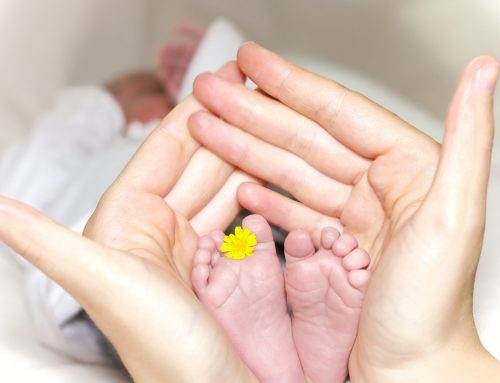Lymphatic swelling: a common side effect of breast cancer surgery
Lymphedema is the continual swelling or feeling of fullness, usually in the different extremities, as a result of a blockage in the lymphatic system. This blockage prevents lymphatic fluid from draining efficiently from the affected limb. There are two main types of lymphedema, based on their causes: primary and acquired. Primary lymphedema is often hereditary and develops when the body’s lymph vessels do not develop correctly. Acquired (or secondary) lymphedema is an after-effect of tumor treatment or a surgery to remove cancer-compromised lymph nodes.
As a result, lymphedema is frequently seen in the arms and hands after surgery and/or radiation treatment for breast cancer. A lumpectomy or mastectomy will often damage or partially remove lymph nodes, which are necessary to proper lymphatic fluid drainage; a radical mastectomy will remove the lymph nodes completely. In some patients lymphedema will occur within days of breast surgery, and for others it will develop years later. In both cases, it could be either a temporary or a chronic condition.
How does the lymphatic system work?
The lymphatic system is a crucial piece of your overall immune system, working to fight and prevent disease. It is made up of a large network of lymph nodes and vessels throughout your body. Lymph nodes are very small organs (about the size of a bean) spread throughout your body in order to trap and fight infections that pass through your lymphatic fluid by way of lymph vessels. When the lymph vessels or nodes are damaged during breast cancer surgery, the lymphatic fluid will not filter and flow the way it should, which unfortunately leads to swelling.
What signs do I look for?
Signs or side effects of lymphedema to watch out for include: all general signs of swelling, such as a full sensation in the arms, hands, chest, skin feeling tight, trouble fitting into dress in one particular region, or ring/wristwatch/arm jewelry snugness, as well as general aching in the affected area, a diminished range of motion, skin that appears harder or thicker than usual (called fibrosis), and/or repeat infections.
What can I do to prevent lymphatic swelling?
Typically patients who are at high danger of getting lymphedema are cautioned by their physician before treatment begins. Your physician will also thoroughly check you for signs at each visit. While there is some debate whether lymphedema can be prevented, maintaining a healthy weight and regular exercise program can help slow down or reduce the impact of lymphedema. When exercising, try to avoid exercises that involve heavy lifting or that cause you to overtire the affected arms. However, do maintain the full range of motion, with low-strain exercises. You can also read more on exercising with lymphedema.
Additionally, because minor infections (which the lymphatic system would ordinarily fight, without us ever realizing the infection occurred) can trigger lymphedema, women at risk may choose to minimize activities that increase the chance of infection. For example, activities that may cause small wounds, such as cuts or burns, or anything that may allow wounds you already have to be exposed to outside substance.
Be careful with those every day activities that you would normally take for granted. Surprisingly some of our daily activities can result in injury and may trigger or compound lymphedema. Keeping away from them or doing them with caution will reduce the risk.
- Allow others to do the cooking when possible.
- When taking care of hot pots and container, dependably utilize potholders and don’t touch hot surfaces with uncovered hands.
- Use additional care in cutting and dicing meats and vegetables.
- Frequently wash hands with warm, and dry them completely with a delicate towel.
- Use oils and lotions to counteract dry skin.
- Have blood drawn from your unaffected arm or in the case of a double mastectomy, in another area of your body.
- Be cautious when cutting fingernails and toenails.
Is there treatment for lymphedema?
Treatment for lymphedema is dependent upon the seriousness of the swelling. Ask your physician or specialist to help create a program for you that includes massage of the affected area, exercises, skin care, and if necessary, compression bandages and fitted sleeves.
Compression treatments, the utilization of pressure gauze, pressure leggings, pressure sleeves and restrictive/tight articles of clothing are the most supported and practical techniques for treatment. Today women have the option of purchasing beautiful compression sleeves that complement any wardrobe.
The most critical part of treatment is taking care of your whole body, all the time.
I bet you have a lot of questions. Here are a few of the questions that other women ask.






Leave A Comment